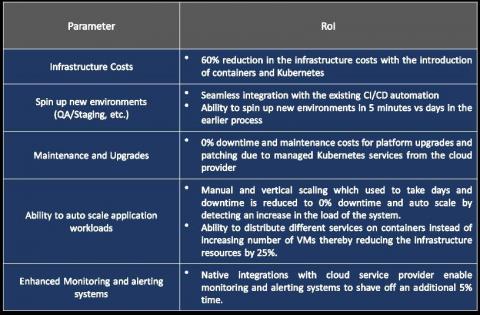Operations | Monitoring | ITSM | DevOps | Cloud
Latest News
Install SAP Data Intelligence 3.0 on an RKE Cluster
Rancher and SAP have been working on a dedicated verification of SAP Data Intelligence 3 (SAP DI) on Rancher Kubernetes Engine (RKE) cluster and Longhorn storage platform. This blog will guide you on how to properly install SAP DI on an RKE cluster.
SUSE Enters Into Definitive Agreement to Acquire Rancher Labs
I’m excited to announce that Rancher has signed a definitive agreement to be acquired by SUSE. Rancher is the most widely used enterprise Kubernetes platform. SUSE is the largest independent open source software company and a leader in enterprise Linux. By combining Rancher and SUSE, we not only gain massive engineering resources to further strengthen our market-leading product, we are also able to preserve our unique 100% open source business model.
The State of Event-Driven Automation
Talking about competition can be hard. It’s understandable. Product positioning can be touchy subjects especially when those use cases overlap. In the DevOps space, event-driven architectures are certainly not a new concept. Companies like Netflix, LinkedIn, and Facebook have in-house tools built specifically for this type of automation. However, Relay’s mission is make it easy for everyone to build event-driven workflows – not the Netflix-es of the world.
Distributed Tracing & Logging - Better Together
The State of Robotics - June 2020
ROS, Ripple and reflections – In this month’s edition of The State of Robotics, we’ll tell you about the recently discovered Ripple vulnerability, the latest and greatest in robots reflecting nature, and a dash of news from the ROS universe.
Why should an Enterprise Invest in Containerization of Applications Instead of Lift-and-Shift
In our series of blog posts based on Automated Containerization, here is another quick read on why Enterprises should invest in containerization of applications instead of Lift-and-Shift approach. Legacy applications can be slow and expensive to maintain. If you use the Lift-and-Shift approach to migrate applications to cloud is relatively inexpensive, but ongoing operating costs can be exactly the opposite. The contention is that applications perform and evolve relative to their environments.
Upgrading Kubernetes the Easy Way with Tanzu Kubernetes Grid Service for vSphere
Lifecycle management is one of the most complicated components of Kubernetes. In a past article, we showed how to modify a cluster to change the type and size of its nodes. In this post, we will explain how to upgrade the Kubernetes version of a Tanzu Kubernetes cluster when there is a new release. And the best part is that it’s all done in just a few easy steps using the Tanzu Kubernetes Grid Service for vSphere.
Google Cloud OnAir with CEO Ashar Rizqi: Benefits of Cloud Infrastructure
Kubernetes Secrets - The good the bad and the ugly
Secrets, by definition, should be kept secret, whichever tool you’re using. While there are plenty of best practices for keeping your Kubernetes secrets actually secret, there are some loopholes that can compromise their security, and might be taken advantage of by malicious entities. This post will cover prevalent best practices for securing your secrets on Kubernetes along with some new approaches for secrets management.











